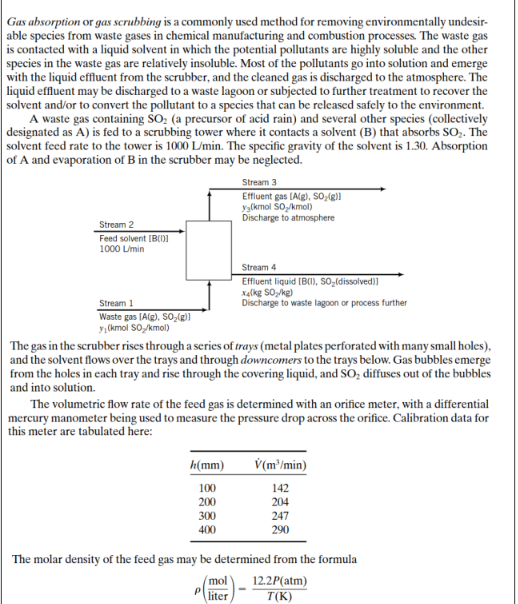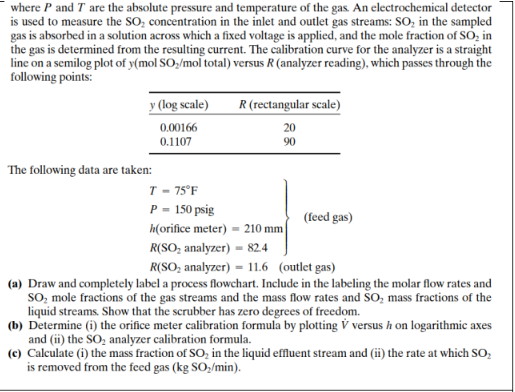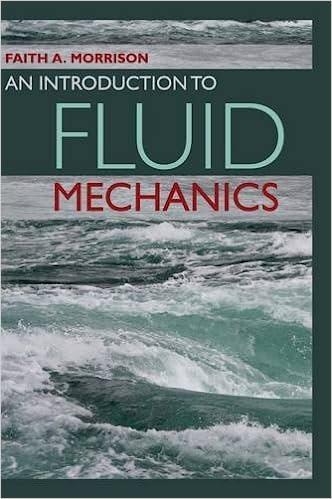

Gas absorption or gas scrubbing is a commonly used method for removing environmentally undesirable species from waste gases in chemical manufacturing and combustion processes. The waste gas is contacted with a liquid solvent in which the potential pollutants are highly soluble and the other species in the waste gas are relatively insoluble. Most of the pollutants go into solution and emerge with the liquid effluent from the scrubber, and the cleaned gas is discharged to the atmosphere. The liquid effluent may be discharged to a waste lagoon or subjected to further treatment to recover the solvent and/or to convert the pollutant to a species that can be released safely to the environment. A waste gas containing SO2 (a precursor of acid rain) and several other species (collectively designated as A ) is fed to a scrubbing tower where it contacts a solvent (B) that absorbs SO2. The solvent feed rate to the tower is 1000L/min. The specific gravity of the solvent is 1.30 . Absorption of A and evaporation of B in the scrubber may be neglected. The gas in the scrubber rises through a series of trays (metal plates perforated with many small holes), and the solvent flows over the trays and through downcomers to the trays below. Gas bubbles emerge from the holes in each tray and rise through the covering liquid, and SO2 diffuses out of the bubbles and into solution. The volumetric flow rate of the feed gas is determined with an orifice meter, with a differential mercury manometer being used to measure the pressure drop across the orifice. Calibration data for this meter are tabulated here: The molar density of the feed gas may be determined from the formula (litermol)T(K)12.2P(atm) where P and T are the absolute pressure and temperature of the gas. An electrochemical detector is used to measure the SO2 concentration in the inlet and outlet gas streams: SO2 in the sampled gas is absorbed in a solution across which a fixed voltage is applied, and the mole fraction of SO2 in the gas is determined from the resulting current. The calibration curve for the analyzer is a straight line on a semilog plot of y (mol SO2/mol total) versus R (analyzer reading), which passes through the following points: The following data are taken: R(SO2analyzer)=11.6(outletgas) (a) Draw and completely label a process flowchart. Include in the labeling the molar flow rates and SO2 mole fractions of the gas streams and the mass flow rates and SO2 mass fractions of the liquid streams. Show that the scrubber has zero degrees of freedom. (b) Determine (i) the orifice meter calibration formula by plotting V versus h on logarithmic axes and (ii) the SO2 analyzer calibration formula. (c) Calculate (i) the mass fraction of SO2 in the liquid effluent stream and (ii) the rate at which SO2 is removed from the feed gas (kgSO2/min)








